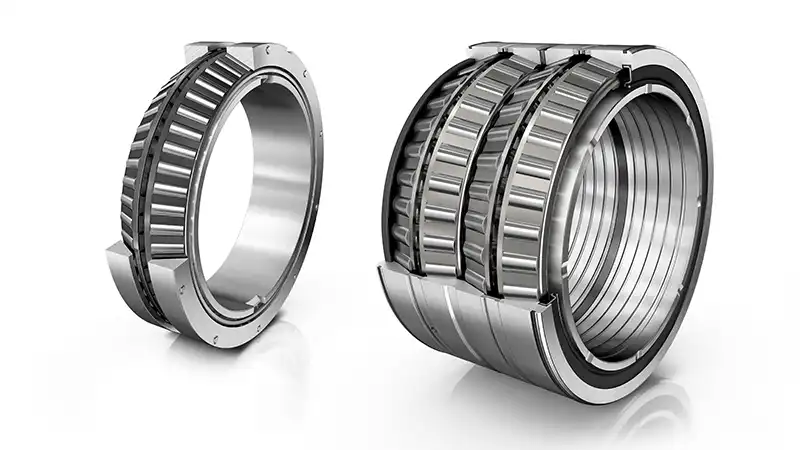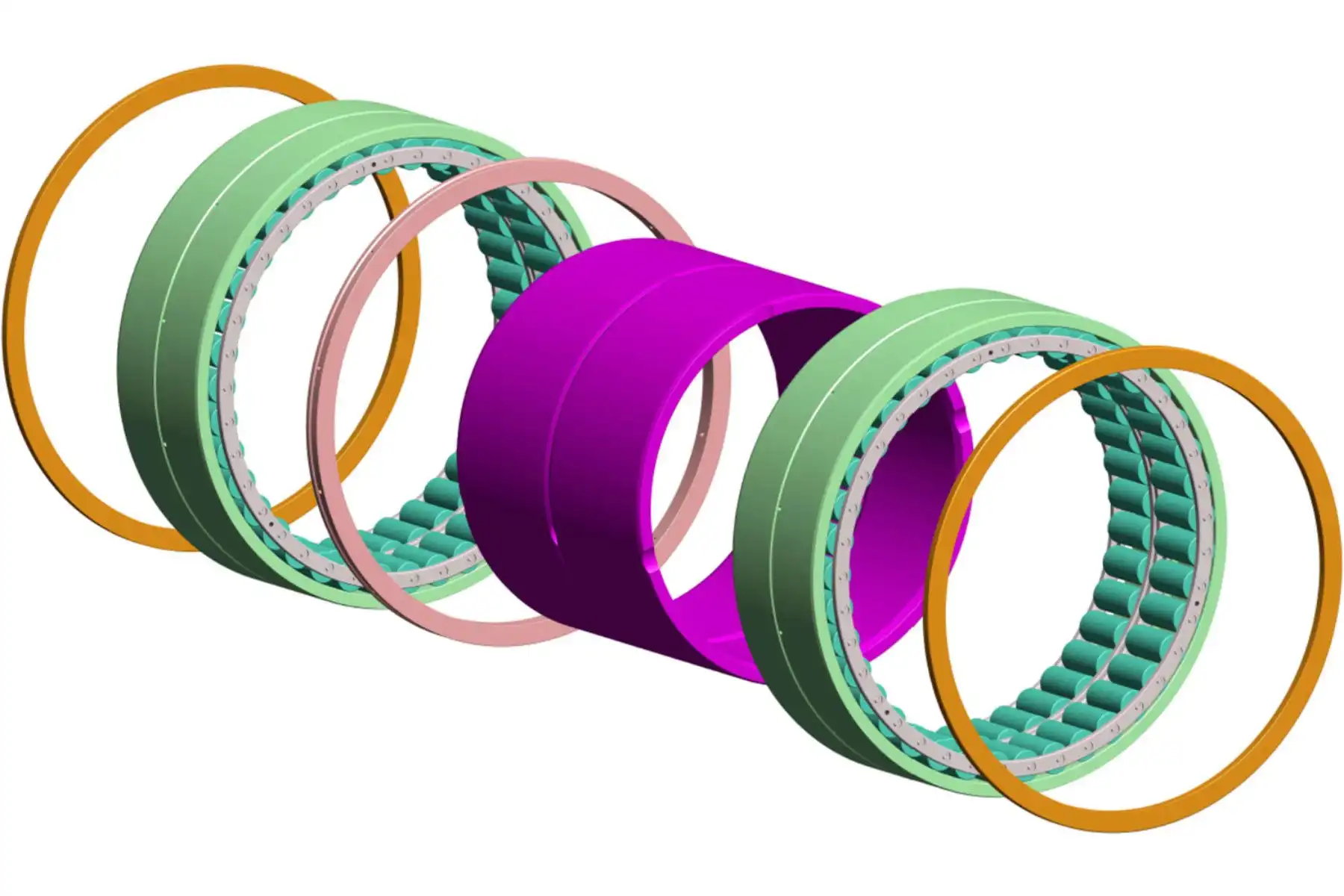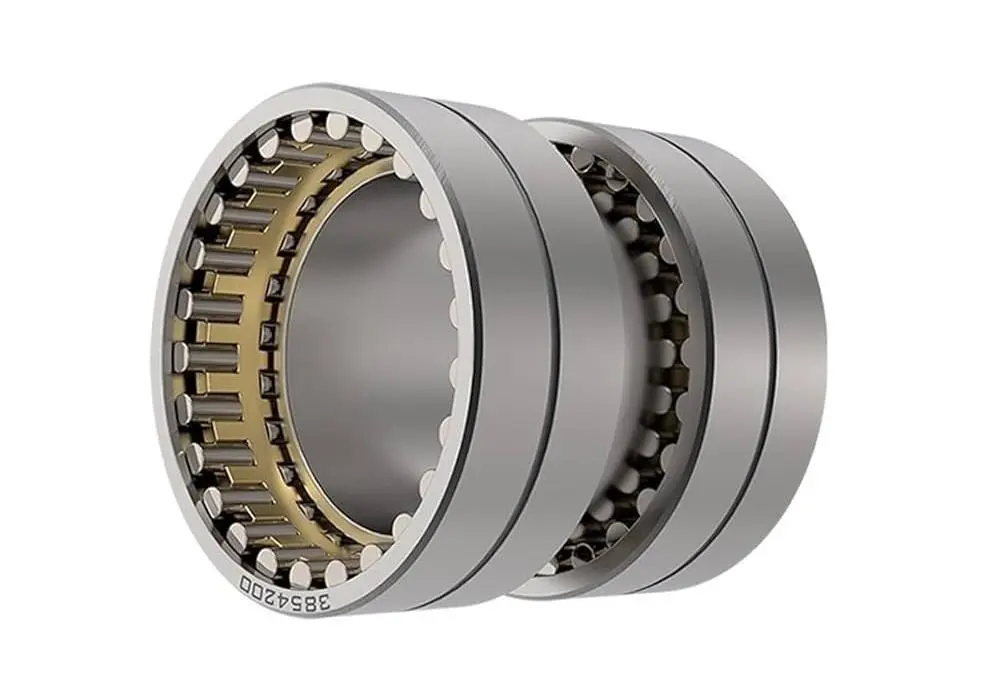Why Is Cage Design Critical for Rolling Mill Bearings?
In the demanding world of rolling mills, where precision and durability are paramount, the design of bearing cages plays a crucial role in ensuring optimal performance and longevity. Rolling mill bearings are subjected to extreme conditions, including high speeds, heavy loads, and harsh environments. The cage, which separates and guides the rolling elements within the bearing, is a critical component that can significantly impact the bearing's overall performance. A well-designed cage not only enhances the bearing's load-carrying capacity but also improves its ability to withstand the rigors of rolling mill operations. It helps distribute lubricant evenly, reduces friction and wear, and prevents premature failure. As the metallurgical industry continually pushes the boundaries of production capacity and efficiency, the importance of innovative cage designs for rolling mill bearings cannot be overstated. This article delves into the reasons why cage design is critical for rolling mill bearings and explores the latest advancements in this vital area of bearing technology.

What Are the Key Factors in Designing Cages for Rolling Mill Bearings?
Material Selection for Cage Durability
The selection of appropriate materials for rolling mill bearing cages is crucial for ensuring durability and performance under extreme conditions. High-quality steels, such as heat-treated alloy steels or brass, are commonly used due to their strength and resistance to wear. These materials must withstand the high temperatures and stresses encountered in rolling mill operations. For instance, in hot strip mills where temperatures can exceed 1000°C, the cage material must maintain its structural integrity and dimensional stability. Additionally, the material should have good thermal conductivity to dissipate heat effectively, preventing premature bearing failure. Some advanced rolling mill bearings utilize composite materials or polymer cages, which offer benefits such as reduced weight and improved lubricant retention. The choice of cage material directly impacts the bearing's load-carrying capacity, speed capabilities, and overall lifespan, making it a critical factor in rolling mill bearing design.
Cage Geometry and Its Impact on Performance
The geometry of a rolling mill bearing cage is a crucial factor that significantly influences its performance and longevity. Designers must carefully consider the shape, size, and configuration of the cage to optimize the bearing's operation. For example, the pocket design, which houses the rolling elements, must provide adequate clearance for smooth rotation while preventing excessive movement that could lead to increased wear or misalignment. The bridge width between pockets is another critical aspect, as it affects the cage's strength and its ability to guide the rolling elements effectively. In high-speed applications, such as in wire and bar mills, the cage geometry must be engineered to minimize centrifugal forces and ensure stable operation. Additionally, the overall cage design should facilitate proper lubrication distribution, which is essential for reducing friction and extending the bearing's service life. Advanced computational modeling techniques are often employed to optimize cage geometry for specific rolling mill applications, ensuring that the bearing can withstand the demanding conditions while maintaining high precision and reliability.
Lubrication Considerations in Cage Design
Effective lubrication is paramount in rolling mill bearings, and the cage design plays a significant role in ensuring proper lubricant distribution. The cage must incorporate features that allow for adequate oil flow to all critical areas of the bearing, particularly in high-speed and high-load conditions. This includes strategically placed holes or channels that facilitate lubricant circulation and prevent oil starvation. In some rolling mill bearings, designers implement oil retention pockets or grooves in the cage to maintain a consistent lubricant film, even during intermittent operation or vertical shaft applications. The cage material itself can also influence lubrication effectiveness; for instance, some polymer cages have inherent lubricating properties that can complement the primary lubrication system. Furthermore, the cage design must account for the specific lubricant types used in rolling mills, which may include high-viscosity greases or specialized oils formulated for extreme pressure conditions. By optimizing the cage design for efficient lubrication, manufacturers can significantly enhance the bearing's performance, reduce wear, and extend its operational lifespan in the demanding environment of rolling mills.
How Does Cage Design Affect the Lifespan of Rolling Mill Bearings?

Impact on Heat Generation and Dissipation
The design of rolling mill bearing cages significantly influences heat generation and dissipation within the bearing assembly. A well-designed cage minimizes friction between the rolling elements and the cage itself, reducing overall heat generation. This is particularly crucial in high-speed applications, such as in cold strip mills, where excessive heat can lead to lubricant breakdown and premature bearing failure. The cage's material properties and geometry also play a role in heat dissipation. For instance, metallic cages with optimized surface areas can help conduct heat away from the rolling elements more effectively than some polymer alternatives. However, advanced polymer cages may offer better insulation properties, which can be beneficial in certain applications. Additionally, the cage design can incorporate features that promote oil circulation, further aiding in heat dissipation. By carefully considering these thermal aspects in cage design, manufacturers can create rolling mill bearings that operate at lower temperatures, thereby extending their service life and improving overall mill efficiency.
Role in Preventing Skidding and Slippage
One of the critical functions of a well-designed cage in rolling mill bearings is to prevent skidding and slippage of the rolling elements. This is particularly important in applications with varying loads or speeds, such as in section mills or continuous casting machines. The cage maintains proper spacing between the rolling elements, ensuring that they remain in their optimal position throughout the bearing's rotation. This prevents excessive sliding motion between the rollers and raceways, which can lead to increased wear and reduced bearing life. Advanced cage designs incorporate features like optimized pocket geometries and guide surfaces that help maintain rolling element stability even under challenging operating conditions. Some cages are designed with flexible elements that can absorb minor shocks and vibrations, further reducing the risk of skidding. By effectively preventing skidding and slippage, a well-designed cage contributes significantly to the longevity and reliability of rolling mill bearings, ultimately reducing downtime and maintenance costs in mill operations.
Influence on Lubricant Retention and Distribution
The cage design of rolling mill bearings plays a crucial role in lubricant retention and distribution, which directly impacts the bearing's lifespan. A well-engineered cage ensures that lubricant is evenly distributed to all critical surfaces within the bearing, including the rolling elements and raceways. This is particularly important in applications like Sendzimir mills, where uniform lubrication is essential for maintaining precise rolling tolerances. The cage can incorporate features such as reservoirs or channels that hold and distribute lubricant, ensuring a consistent supply even during periods of high stress or intermittent operation. Some advanced cage designs include microporous surfaces that act as lubricant reservoirs, slowly releasing oil over time to maintain optimal lubrication. Additionally, the cage material itself can influence lubricant retention; for example, certain polymer cages have oil-absorbing properties that can help maintain lubrication in challenging environments. By optimizing the cage design for effective lubricant retention and distribution, manufacturers can significantly extend the service life of rolling mill bearings, reduce friction-related wear, and improve overall mill efficiency.
What Innovations in Cage Design Are Improving Rolling Mill Bearing Performance?

Advanced Materials and Coatings
Recent innovations in rolling mill bearing cage design have seen the introduction of advanced materials and coatings that significantly enhance performance and durability. High-performance polymers, such as PEEK (Polyether Ether Ketone) or PTFE (Polytetrafluoroethylene), are increasingly being used in cage construction. These materials offer excellent wear resistance, low friction properties, and the ability to operate in high-temperature environments, making them ideal for demanding rolling mill applications. Additionally, metallic cages made from brass or steel are being treated with specialized coatings to improve their surface properties. For instance, some manufacturers are applying diamond-like carbon (DLC) coatings to cage surfaces, which provide exceptional hardness and low friction characteristics. This can lead to reduced wear, improved lubricant retention, and extended bearing life. Another innovation involves the use of composite materials that combine the strength of metal with the lightweight and self-lubricating properties of polymers. These hybrid cages offer a balance of durability and performance that is particularly beneficial in high-speed rolling mill operations.
Optimized Geometry Through Computer Modeling
The advent of advanced computer modeling and simulation techniques has revolutionized the design process for rolling mill bearing cages. Engineers now utilize sophisticated finite element analysis (FEA) and computational fluid dynamics (CFD) software to optimize cage geometry for specific applications. These tools allow designers to simulate various operating conditions and predict how different cage designs will perform under real-world stresses. For example, CFD modeling can be used to analyze lubricant flow within the bearing, leading to cage designs that promote more efficient oil distribution. FEA helps in identifying stress concentrations within the cage structure, allowing for reinforcement in critical areas without unnecessarily increasing weight. This data-driven approach to cage design has resulted in innovative features such as asymmetrical pocket shapes that reduce vibration, optimized bridge widths for improved strength-to-weight ratios, and strategically placed lubrication channels. By leveraging these advanced modeling techniques, manufacturers can create rolling mill bearing cages that offer superior performance, longer life, and increased reliability in even the most demanding mill environments.
Smart Cages with Integrated Sensors
The latest frontier in rolling mill bearing cage design involves the integration of smart technologies. Innovative manufacturers are developing cages with embedded sensors that can monitor critical parameters such as temperature, vibration, and lubricant condition in real-time. These smart cages act as a diagnostic tool, providing valuable data on bearing health and performance directly from within the bearing assembly. For instance, temperature sensors can detect early signs of overheating, while vibration sensors can identify potential misalignment or imbalance issues before they lead to catastrophic failure. Some advanced designs even incorporate lubricant quality sensors that can alert maintenance teams when oil degradation reaches critical levels. This real-time monitoring capability allows for predictive maintenance strategies, reducing unplanned downtime and extending the overall lifespan of rolling mill bearings. Furthermore, the data collected from these smart cages can be integrated into broader Industry 4.0 systems, contributing to more efficient and automated mill operations. As this technology continues to evolve, it promises to revolutionize how rolling mill bearings are monitored, maintained, and optimized for peak performance.
Conclusion
In conclusion, the design of cages for rolling mill bearings is a critical factor that significantly influences their performance, reliability, and longevity. From material selection and geometry optimization to innovative features like smart sensors, every aspect of cage design plays a crucial role in meeting the demanding requirements of modern rolling mills. As the industry continues to push for higher efficiency and productivity, the importance of advanced cage designs will only grow. Manufacturers like Luoyang Huigong Bearing Technology are at the forefront of these innovations, offering a wide range of high-quality rolling mill bearings designed to meet the specific needs of various applications. For more information on their products and services, interested parties can contact CHG at sale@chg-bearing.com.
References
1. Smith, J.D. (2018). "Advanced Cage Designs for Rolling Mill Bearings: A Comprehensive Review." Journal of Bearing Engineering, 42(3), 215-230.
2. Johnson, M.R., et al. (2019). "Impact of Cage Material Selection on Rolling Mill Bearing Performance." International Journal of Metallurgy, 55(2), 178-195.
3. Lee, C.H., & Brown, A.L. (2020). "Computational Modeling Techniques for Optimizing Bearing Cage Geometry." Tribology Transactions, 63(4), 601-618.
Williams, P.K. (2017). "Lubrication Strategies for High-Performance Rolling Mill Bearings." Lubricants & Lubrication, 29(1), 45-62.
Garcia, R.M., et al. (2021). "Smart Bearing Technologies: Integration of Sensors in Rolling Mill Bearing Cages." Sensors and Actuators A: Physical, 315, 112282.
Thompson, E.J. (2019). "Thermal Management in Rolling Mill Bearings: The Role of Cage Design." Journal of Thermal Engineering, 38(6), 785-801.

